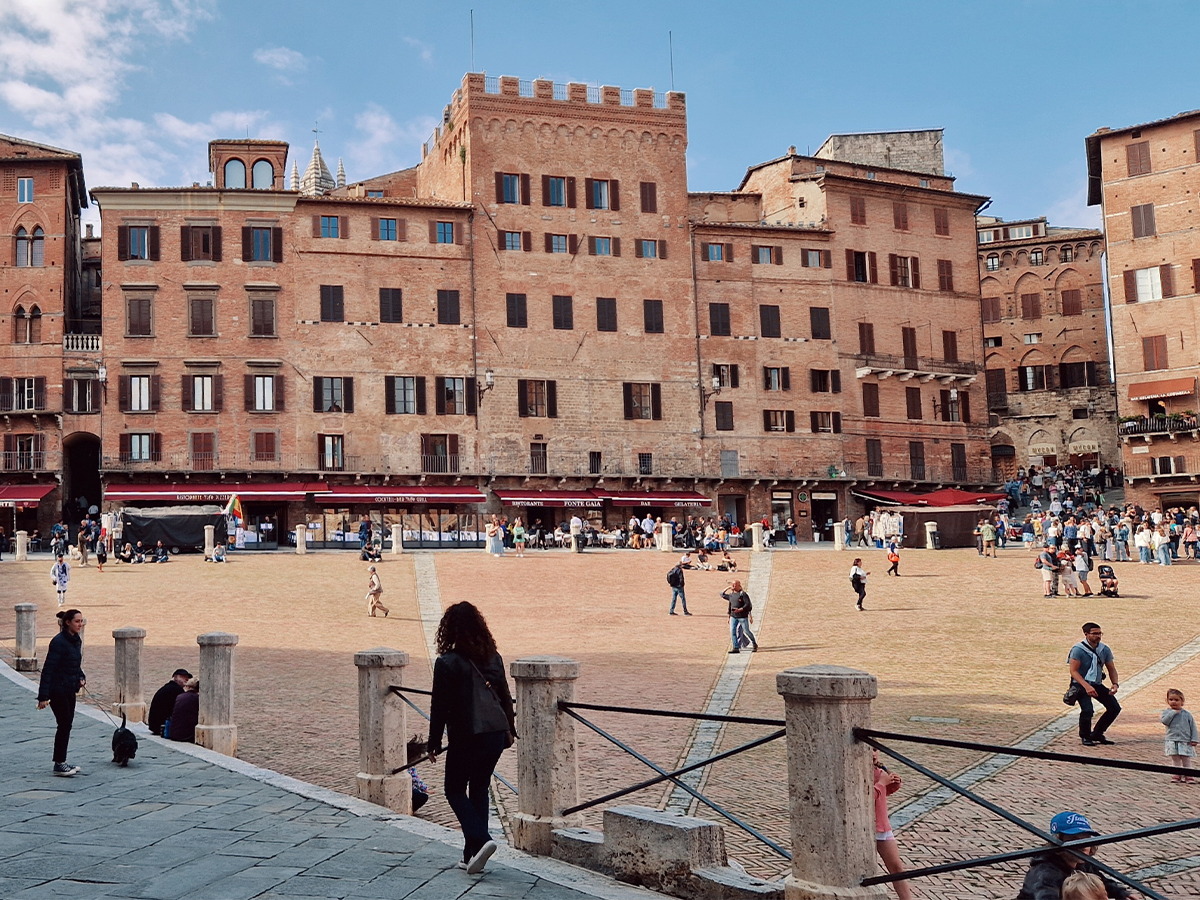Reflections on tolerance and belonging in Siena
by Ioana Gherghel
For a global urban planning conference like ISOCARP to take place in Siena seems appropriate. Siena is a city where living close together is clearly managed with spirit and imagination and where creative solutions to urban problems guide everyday life and are imprinted in the urban fabric of the city.
The famous fan-shape of the Piazza del Campo encircled by a horse race course, the narrow canyon-like streets, the flags flying, the sculptures, emblems, and engravings on stone friezes all have a rich story of identity and belonging. Sienese life as seen through the eyes of an urban designer centres on heritage and identity, both brought to life by the Palio race.
The Palio horse race shapes the calendar of the locals all year round and provides an outlet for neighbourly tensions. For a tradition to survive for 800 years and to still be as strong and ingrained as it is today, it must serve a fundamental purpose in Sienese society. This competitive spirit is channeled into the Palio, and fuels its identity. It seems that the people of Siena have been known for centuries as being “mad” — a label they are almost proud of.
In the age of NIMBYism and a housing crisis, political tensions are increasing; use of land and the question of how to live more closely together is increasingly urgent but increasingly polarised. Approaching design with a social value lens aims to be neutral and non-political, but inevitably the question comes up: “Who is social value for? Who is really benefiting from a social value-led approach?”
At ISOCARP, back in October, I entered a space of exchanging ideas between planning and urban design professionals from all parts of the world: Brazil, China, Indonesia, India, Poland, Romania, France… And while my fellow conference presenters made fascinating contributions, it was Siena itself that taught me unforgettable lessons about tolerance and belonging.
I can’t help thinking that the answer to that inevitable question is that social value approaches have indeed to be more for someone and less for others, but when one part of society benefits, we all benefit. The Sienese create cohesion through healthy competition, they have reliably done so for more than 800 years, and today’s Siena is a fascinating testament to this.
